With the continuous deepening of education modernization, the role of modern information technology in education reform is gradually emerging. Supported by the concept of modern teaching constructivism, "electronic schoolbags" are becoming a hot spot in educational teaching equipment. In September 2010, the school where the author worked was fortunate to be the first pilot school of the "e-schoolbag" project of Shanghai Hongkou District Education Bureau. Through more than two years of practice and thinking, the author has a certain understanding of the geography teaching design under the environment of e-bags, and personally feels the positive impact of "e-bags" on geography classroom teaching. This article aims to discuss the characteristics of e-schoolbags and put forward several teaching strategies in combination with the practice of geography teaching design in the e-schoolbag environment, in order to draw lessons and look forward to peer correction and criticism.
1. Analysis of "electronic schoolbags"
E-school bag (literally, e-school bag) literally means to electronicize books, but e-school bags are different from e-books. It is a set of e-learning assistant system platform designed for learners. It uses laptops and tablets Electronic terminals such as computers and smart phones are used as carriers, incorporating multimedia interactive applications such as web pages, videos, animations, etc., to enable students to conduct online learning, submit assignments, and self-assessment; teachers can arrange and correct electronic assignments online and provide online auxiliary guidance; And parents can also keep abreast of students' learning situation through the Internet. In short, the e-bag is “a personal portable learning terminal from a hardware perspective. From the perspective of the functional architecture of education and teaching, it is the learner ’s personal learning environment.â€
So how to design the geography classroom teaching in combination with "electronic schoolbag"? The author concludes in practice that we should pay attention to and think about the following aspects in teaching design:
1. How to highlight the characteristics of the geography discipline while also embodying the characteristics of the electronic schoolbag?
2. How to use electronic schoolbags to make effective breakthroughs in teaching difficulties?
3. How to pay attention to the "personal learning" of students and the "cooperative learning" of the group in the "e-bag" environment?
To this end, the author has combined with classroom teaching many times to explore how to effectively carry out these problems and practice and in-depth thinking. In order to further explain the author's research intentions and results, this article selects the content of the "4.1 Business Center Distribution" in the second semester of the seventh grade of Shanghai Education Press to explain in detail.
2. Classroom teaching practice under the "electronic schoolbag" environment
1. Textbook analysis
From the content of the textbook, the "distribution of business centers" is mainly divided into three aspects: the concept of business centers, the formation conditions of business centers, and the regional distribution differences of China's business centers. Among them, the conditions for the formation of business centers are more abstract because they are related to geographical factors such as terrain, population, and transportation. Therefore, it is a teaching difficulty for junior students whose thinking level is still dominated by image thinking. Therefore, in the teaching design, it is necessary to consider the use of electronic schoolbags to break through the difficulties.
The author's design is to allow students to superimpose maps on a computer to find the conditions for the formation of a business center. For example, let students superimpose the distribution maps of China's commercial centers and population density maps. It is easy for students to direct business centers to densely populated areas; then superimpose them with traffic distribution maps to conclude that "business centers are generally transportation hubs City "conclusion. In this way, we can intuitively understand that the formation of a business center is related to factors such as population and transportation. (See Figure 1, Figure 2)
2. Teaching objectives
(1) Knowledge and skills: be able to read the map to describe the main business centers in China and summarize their distribution characteristics; give examples of regional differences in domestic trade and try to explain the reasons for regional differences in domestic trade.
(2) Process and method: Through the overlay analysis of thematic maps, find out the main factors affecting the distribution of business centers, and infer the reasons for the difference in the distribution of business centers in China; through group discussions, it can be more complete from terrain, climate, transportation, etc. Analyze the reasons for the trade differences between the east and the west.
(3) Emotional attitudes and values: Analyze the causes of trade differences between the east and the west through multiple perspectives, and initially master the ability to look at things comprehensively; try to express your analysis in a structured manner and make your own independent judgments on the analysis of other groups.
The establishment of the above teaching objectives is mainly to highlight the characteristics of the subject of geography and reflect the characteristics of electronic schoolbags. The characteristics of the subject of geography are to speak with maps and express their views with maps, so as to realize the cultivation of students' spatial abilities. The characteristic of the electronic schoolbag is to break through the difficulties of teaching through information technology and the network environment, so that students can better and more easily understand the main line of teaching that each element of geography is interconnected and influential.
3. Teaching process
Session 1: The situation is interesting and the concept is clear
[Teacher Activity] Present materials and related pictures: Information and pictures of the top ten commercial centers in Shanghai selected by the Shanghai Tourism Bureau and the Commercial Management Center. Question: Everyone has a shopping experience, so where do you usually shop? What do you buy? Please classify the business center according to the actual situation in your life?
[Student activities] Each student can use the computer to browse some business center information of their own interest, and then define the concept of the business center according to the actual situation in life.
Strategy description: In traditional geography classrooms, students generally passively accept the concepts and viewpoints taught by teachers, and through e-bags, students ’autonomy is strengthened, and they can choose the content they are interested in to browse and form“ The concept of "business center" is then adjusted and constructed in accordance with the teacher's conclusion. In this way, students' initiative and participation have been greatly improved.
Session 2: Group activities, exploring new knowledge
[Teacher Activity] Introduce the method of map overlay, and guide students to find the conditions for the formation of business centers by using map overlay. Use the transmission function of e-bags to distribute topographic maps, population density maps, traffic distribution maps, and four industrial base maps to students, allowing students to complete the relevant requirements of activities in the form of group cooperation.
[Student activities] Use the laptop to receive the map sent by the teacher, and use the map to superimpose the research topic in the form of a group of two left and right classmates.
[Study topic] Combine the relevant map given by the teacher, mark the location of the business center you know in a superimposed manner, and answer the following questions:
a. How are these business centers related to their population density, transportation, and topography?
b. What are the characteristics of industrial distribution around these commercial centers?
[Teacher Activity] After the student ’s overlay is over, the remote control technology of the e-book bag is used to display the result of the student ’s overlay on the electronic whiteboard, and the student speaks the conclusion after the overlay. Other students can supplement and question this conclusion.
Strategy explanation: The significance of e-bags is to change the teaching methods of teachers and the learning methods of students. These are mainly reflected in: First, through the use of the function of electronic schoolbags, assist students to overcome the difficulties of teaching. Because the process from concrete to abstraction will inevitably produce some thinking load, technology can help solve the thinking load. Second, the students superimpose the map, which can more intuitively express the interconnection between geographical elements, which helps to cultivate the students' spatial ability and reading ability. Third, mutual complementation and questioning can reflect the classroom teaching mode led by the student and the teacher, so that each student has a full opportunity to express his views and ideas in the classroom teaching. And this design can only become a reality in the environment of "electronic schoolbags".
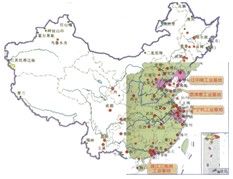
Figure 1 The overlay effect of the commercial city map and the distribution map of the four major industrial bases
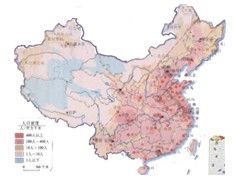
Figure 2 Overlay effect of population density and commercial city map
Session 3: Case analysis, sublimation and improvement
[Teacher Activity] Present the discussion topic and guide students to use the knowledge they have just learned to analyze new cases.
[Student activities] Through the online function of e-bags, find the advantages and characteristics of Kashgar on the webpage, combined with the formation of the business center in this lesson, make suggestions for Kashgar to become the country's business center city.
[Discussion topic] Kashi is a large city located in the west of Xinjiang. A few days ago, Kashgar also wanted to improve the economic benefits of local people by becoming a national commercial center city. Can you use what you learned today to advise Kashgar?
a. Open the web page to find the advantages and characteristics of Kashgar.
b. Combining the formation conditions of the business center, give your good suggestions.
Strategy description: Use the news on the webpage and hot current affairs in the society as case materials to analyze and explore the knowledge just learned, which can allow students to connect with the reality of life, learn to apply, and sublimate the understanding of new knowledge. In addition, through the "electronic schoolbag", the resources that may be used for the discussion are integrated on the learning platform. When students are confused during the research and discussion, they can find the information on the platform in time. In addition, teachers can use the monitoring function to understand the completion of students in a timely manner, and can also dialogue with multiple groups of students in real time to solve problems raised by students and provide guidance and help.
Session 4: Explore homework and develop personality
[Homework Requirements] Students are asked to choose a commercial street (circle) that they have been to, combined with the content of this lesson, speculate on the reasons for its formation, complete an inquiry report, and upload it to the e-bag platform.
Strategy explanation: In the environment of "electronic schoolbags", no matter the content or form of the work, it is bound to become more colorful. The traditional homework assignment exercises have a relatively simple form, and the content cannot keep up with the times. The homework arrangement using the e-schoolbag can not only increase students' interest in homework, but also can combine different Students update the content of the assignments in a timely manner.
In addition, under the "electronic schoolbag" environment, correcting homework and test papers, teachers can timely diagnose various errors, defects and problems of students, and record them in the "medical record card" of the student's learning process, thus forming a scientific Evaluation, so as to track students 'learning, discover and correct students' mistakes and problems, and truly realize the "personalized" teaching model of quantitative analysis and qualitative analysis.
3. Under the "electronic schoolbag" environment, thinking about the junior middle school geography teaching design strategy
1. Before class-make reasonable selection of teaching content
The design of teaching activities in the "electronic schoolbag" environment is a complex, multi-level integrated system. This requires teachers to take into account teaching content with geographical features such as textbook knowledge and subject goals when designing geography teaching, and also to ensure that the teaching activities designed by teachers can be accepted by the "electronic schoolbag" environment. Can take advantage of the technical assistance of "electronic schoolbags". This means that not every section of the geography textbook is suitable for teaching with e-bags. This requires teachers to use the e-bags for instructional design and choose the content of the textbooks reasonably.
Combined with the author's practical effectiveness test, the selected teaching content should have the following characteristics:
First, the learning angle of the selected teaching content should be diverse, that is, it can allow students to understand and analyze through multiple angles. At the same time, the learning paths presented by some multi-angle geographic problems are also multi-latitude, which can meet the learning needs of students of different learning levels. Some content is single and purely knowledge-based teaching content is not suitable for teaching in the "electronic schoolbag" environment.
Second, the selected teaching content should be inquisitive and meet the needs of students' independent inquiry and cooperative learning. As far as practical experience is concerned, geography teaching is subject to strict restrictions such as course standards and teaching objectives, and some contents cannot fully meet the teaching requirements under the environment of e-bags. On the contrary, for some inquiring, or in the geography expansion class, the teaching content of the inquiry class is relatively broad, and teachers have free choice, free arrangement, and free play space, which may be more suitable for the teaching environment of electronic schoolbags.
Third, the selected teaching content should have space and depth of thinking, and cannot be too simple and direct. The profoundness and effectiveness of the teaching content directly affect the attraction and persuasion of the teaching to the students. Students may not be able to answer these questions immediately, but they can use e-bags to promote students' autonomous, cooperative, and inquiry-based learning.
Combined with the author's other teaching practices, the examples are as follows:
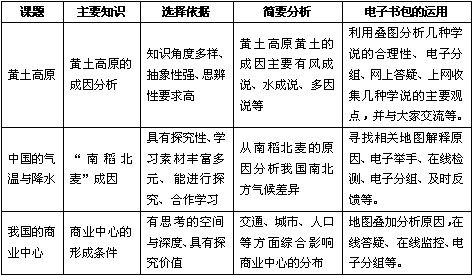
2. In the class-carry out effective digital guidance, evaluation and feedback
The subject of learning in the classroom is always the student. Classroom teaching in an “electronic schoolbag†environment is not a class that demonstrates technology, but a class that demonstrates how technology serves students. It is a class that uses technology to help students solve possible problems and doubts. Therefore, as a teacher, the link in the class is no longer a single knowledge transfer or a simple question and answer form, nor is it to display the e-bag function one by one, highlighting the stage of technology, but requires teachers to use e-bag function to guide students A learning framework that guides students in their direction of learning and promptly responds to students' questions and answers.
According to the author's practical classroom teaching, the teaching in the e-schoolbag environment mainly has the following functions:

From the above table, the technology of children's e-bags only plays a role in assisting teaching activities. The function of e-bags used is still around the key difficulties of teaching and learning, and the technology is more targeted for teaching and learning. Tools to assist. For example, in the course of "Business Center in China", let students use the network search function to understand the Kashgar area, understand the situation of Kashgar in terms of population, transportation, urban distribution, and product characteristics, and then complete related activities by themselves. Through the data transmission function, it is submitted to the teacher, who then selects representative questions and answers for guidance and comment. From the perspective of the practical process, the classroom becomes vigorous through the assistance of technology, and the teachers have firmly grasped the rhythm of teaching and learning, and purposely and targeted guidance and evaluation of students, and due to the transmission function, practice feedback, etc. The functions also maximize the efficiency of classroom teaching.
3. After class-Personalized expansion and extension for students' differences
After-class learning is not only an important part of ensuring the achievement of teaching goals and consolidating knowledge, but also an important way for students to learn in layers and guide teachers by classification. The information support of e-bags provides technically strong support for students ’after-school learning and extension, as well as teachers’ classification guidance. Therefore, when designing the after-class links, teachers should stick to the principle of "integrating, consolidating and improving, cultivating ability, and classification guidance", focusing on the learning content and highlighting the teaching objectives.
For geography subjects, homework in an e-bag environment should have the following three principles:
First, the form of homework should be diversified and the content should be life-like. To break the form of a single text assignment in traditional assignments, design more personalized assignments in novel forms. For example, after the lesson "Topography Distribution in China", students can be assigned an assignment to draw the main mountains and basins in China on a blank map. Although in traditional assignments, you can also send a blank map for students to draw, but assignments in the e-schoolbag environment can be saved or modified in time, and even when a student draws a mountain range incorrectly, the computer will prompt.
Second, the design of geographic operations should reflect hierarchy. In the environment of e-bags, teachers should pay more attention to students ’learning level, respect the differences of students’ personalities, and provide students with learning materials of different depths, arrange assignments of different difficulty under the premise of meeting the curriculum standards. Different question assignments can be designed to meet the needs of students at different levels.
Third, the layout and evaluation of geographic assignments can be open to a certain extent. The evaluation criteria should allow students to have innovative ideas, and give students full independent learning space. For example, after the lesson of "China's Business Center", students are asked to choose a commercial street (circle) they have been to, combined with the content of the classroom learning, speculate on the reasons for its formation, complete an inquiry report, and upload it to the electronic Schoolbag platform. This can not only stimulate students 'enthusiasm for active inquiry, but also promote students' active and personalized learning.
Beihong Junior High School, Hongkou District, Shanghai
We have provided custom beer kegs for Coca-Cola, Corona, Carlsberg, etc. The sizes of the Ice Buckets are 5QT, 7.5QT, 10QT and 15QT and so on. The round ice buckets are small and portable, with various types of handles and bottle openers, and simple operation.
Description of the 8QT ice bucket:
Name:8QT Ice Bucket
Spec:Φ260/Φ200×210mm
Material: galvanized iron
Note: can hold 8 beer bottles of 355ml
Fields of applications: bar, party, hotel, home, outdoor activity

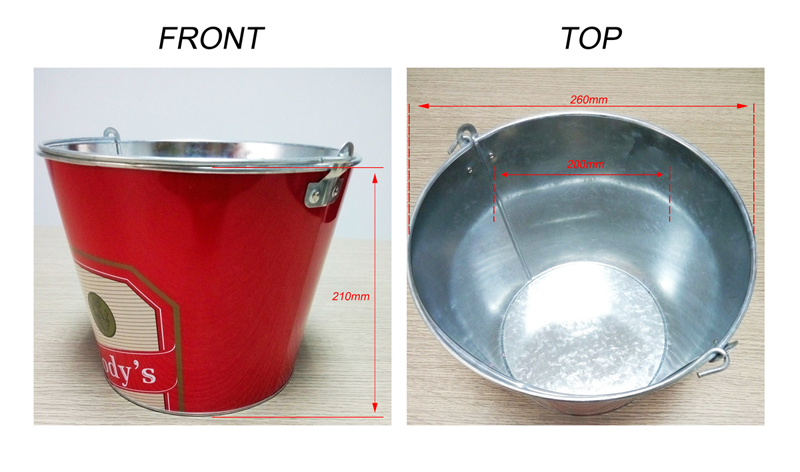
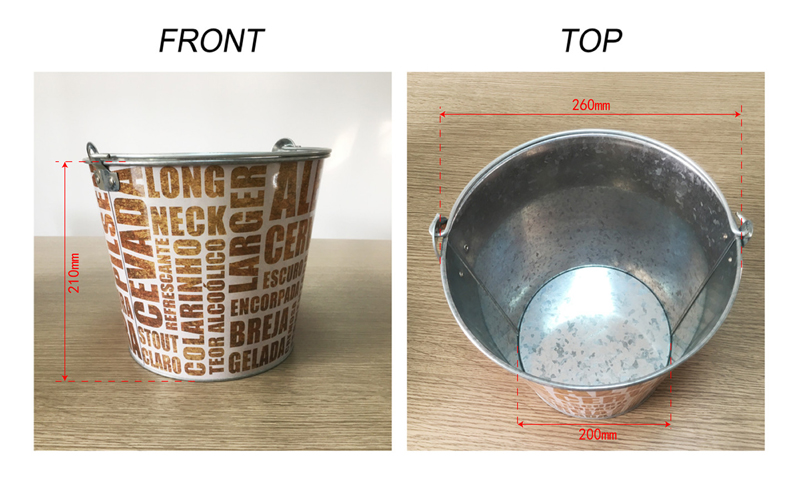
1.Are you factory ?
Yes. A professional ice bucket and Tin Tray manufacture.
2.Are your products the lowest prices ?
EXW, the same quality, we are much cheaper than other suppliers.
3.Can we customized product ?
Yes, Tailor-made tooling for your own design is welcome.
4.What is the transportation ?
If small quantity, we suggest that sent by Courier, If large amount, by shipping.
5.If goods are damaged in transit, how to do ?
Products are inspected strictly before shipping, if damage, they can be replaced .
8QT Ice Bucket
8Qt Ice Bucket,Plastic Ice Bucket,Wine Plastic Ice Bucket,Ice Bucket Tin Box
True & Bright Metal Packaging Co.,Ltd.KaiPing , https://www.tnbcan.com